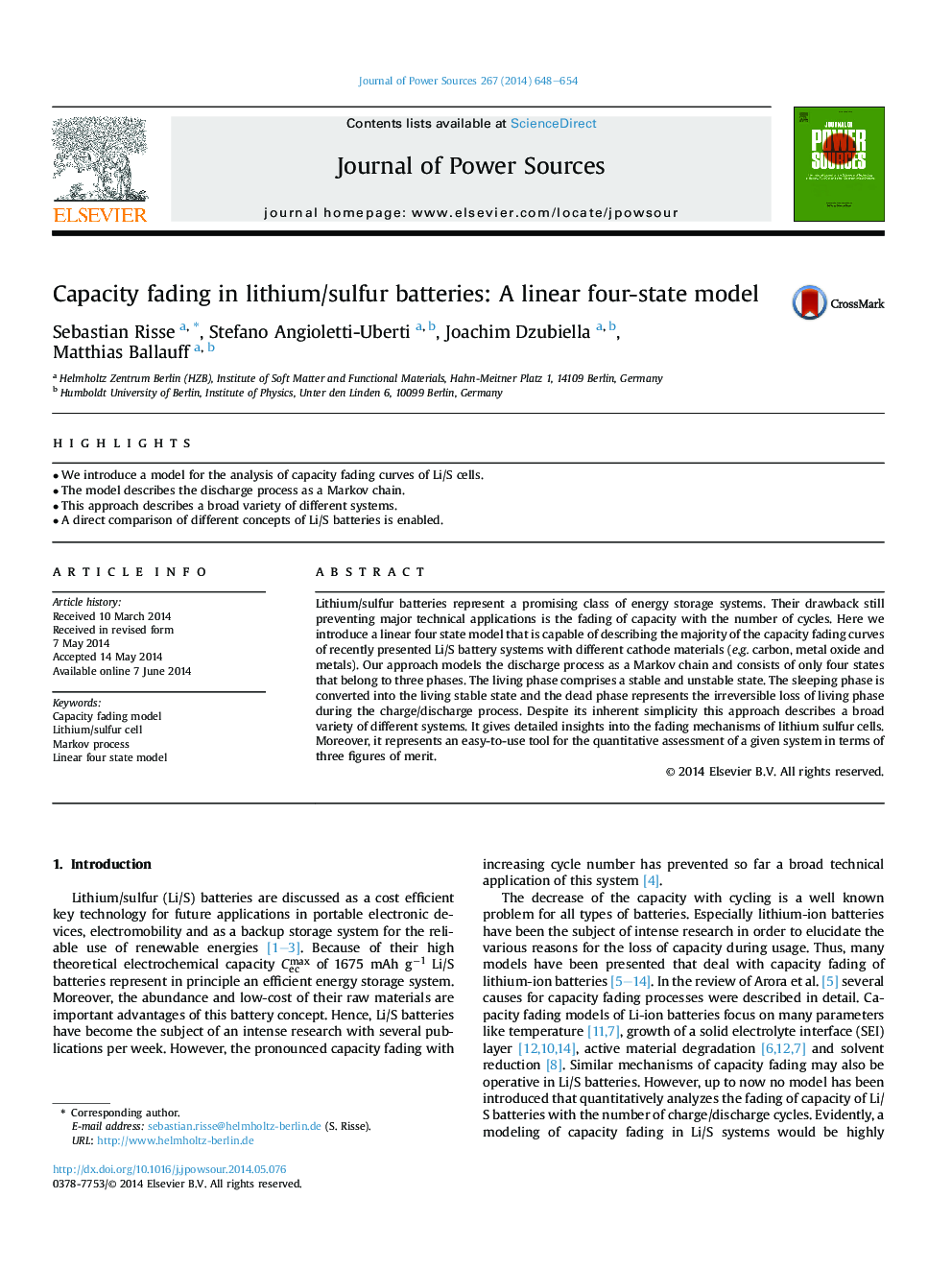| Article ID | Journal | Published Year | Pages | File Type |
|---|---|---|---|---|
| 1286628 | Journal of Power Sources | 2014 | 7 Pages |
•We introduce a model for the analysis of capacity fading curves of Li/S cells.•The model describes the discharge process as a Markov chain.•This approach describes a broad variety of different systems.•A direct comparison of different concepts of Li/S batteries is enabled.
Lithium/sulfur batteries represent a promising class of energy storage systems. Their drawback still preventing major technical applications is the fading of capacity with the number of cycles. Here we introduce a linear four state model that is capable of describing the majority of the capacity fading curves of recently presented Li/S battery systems with different cathode materials (e.g. carbon, metal oxide and metals). Our approach models the discharge process as a Markov chain and consists of only four states that belong to three phases. The living phase comprises a stable and unstable state. The sleeping phase is converted into the living stable state and the dead phase represents the irreversible loss of living phase during the charge/discharge process. Despite its inherent simplicity this approach describes a broad variety of different systems. It gives detailed insights into the fading mechanisms of lithium sulfur cells. Moreover, it represents an easy-to-use tool for the quantitative assessment of a given system in terms of three figures of merit.
